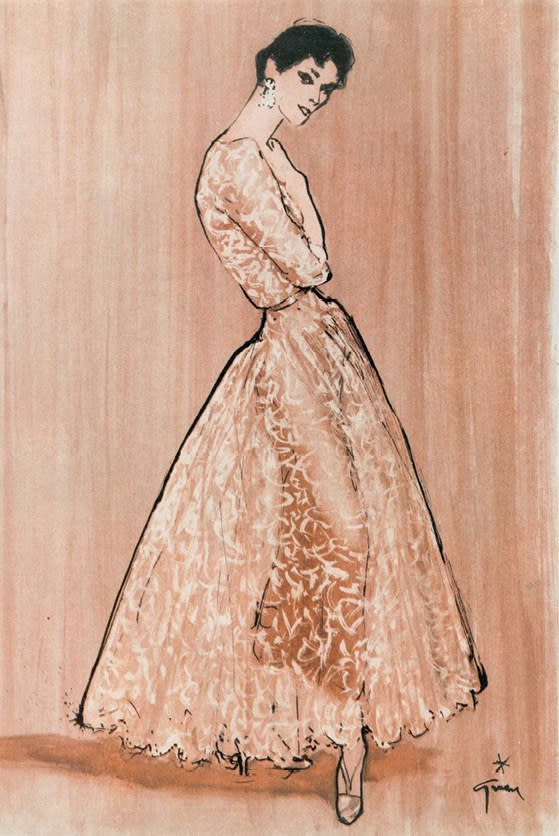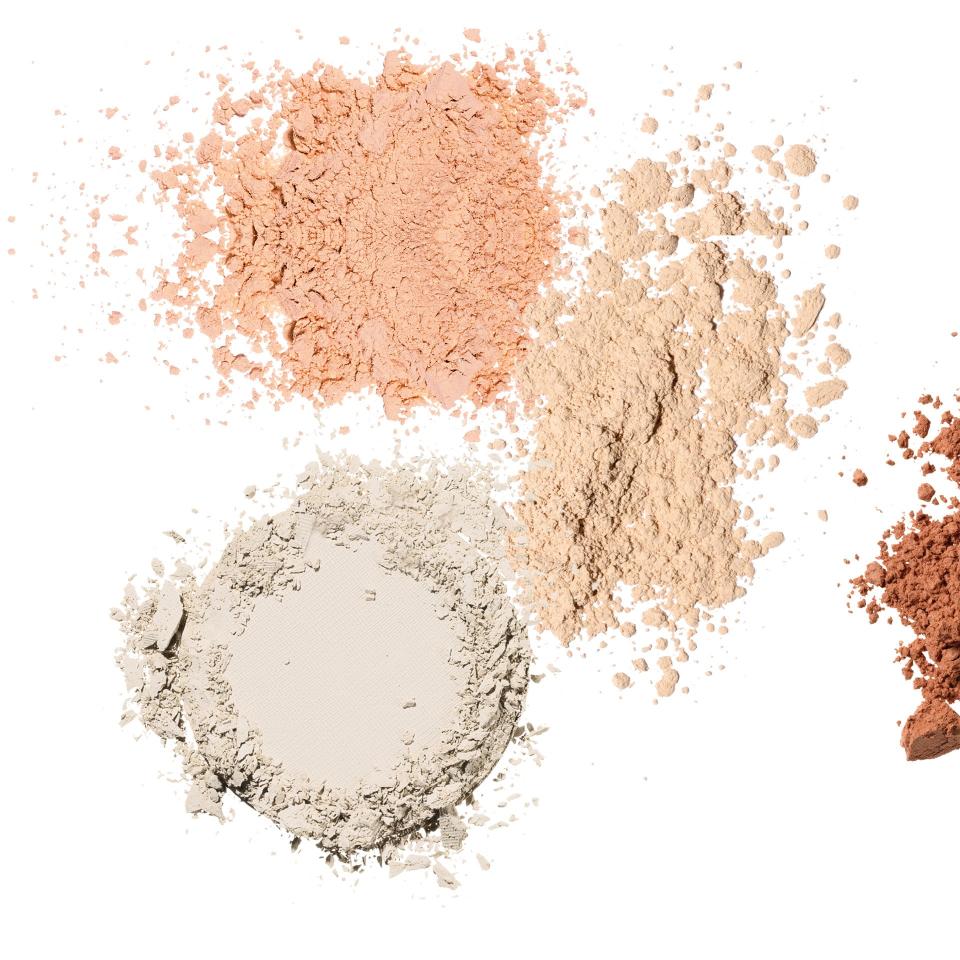Back to Matte: Taking Fashion’s New Power Powders for a Spin
You won’t see it on any Oscar ballots, but powder—that longtime makeup essential—has played a crucial supporting role in many a Hollywood movie. In The Women (1939), glamour-puss Paulette Goddard pulls out a giant shiny compact on the remote Reno ranch where she’s waiting on a quickie divorce. In The Apartment (1960), a vulnerable Shirley MacLaine powders at the table while trying to fend off the attentions of a married lover who is an executive at the company where she works as an elevator operator. More recently, streaming direct to your living room on Amazon Prime Video, Rachel Brosnahan’s marvelous Mrs. Maisel powders up in a 1950s New York City coffee shop in the wee morning hours, having spent the night in jail on obscenity charges. Though the judge may find her foulmouthed, her porcelain complexion will remain flawless.
Yet despite its past glory, powder’s presence on screens and in clutches big and small appears to have recently dimmed. The sparkly skin on red carpets and on Instagram feeds—reminding me, at times, of shiny disco balls or a swarm of fireflies in evening gowns—has ushered in the age of conformist dewiness, suggesting that powder and a matte finish, much like girdles and hair rollers, be relegated to the dustbins of history.
But if you squint hard, past the ubiquitous strobing tutorials on YouTube and endlessly glowing Kardashian-Jenners, new-era famous faces, such as Margaret Qualley and Lizzo—the chart-topper with the seemingly poreless complexion—are carrying the torch for the beautifully buffed. And consider Chanel’s widely lauded fall couture show: Creative director Virginie Viard’s models swanned about in a two-story mock library inspired by founder Gabrielle’s legendary rue Cambon apartment, affecting the parchment-hued demeanor—complete with eyeglasses!—that comes naturally (though far less alluringly) to those of us who have spent our lives indoors reading and writing.

In fact, powder has never really left the fashion world. “No backstage skin I’ve created since day one hasn’t involved powder,” the makeup guru (and newly minted beauty mogul) Pat McGrath tells me. Her new Skin Fetish: Sublime Perfection the System includes primer, foundation, and something she calls “the anti-powder powder,” a lighter-than-air formulation in an impressive five shades, ranging from light bisque to deep mocha. With “an exquisite finish of eggshell smoothness,” McGrath says, it’s “powder you needn’t be afraid of.”
Perhaps it was fear, after all, that put me off powder in the first place. A casual remark, overheard at some forgotten department-store makeup counter, cautioned that for women of a certain age, powder is a no-go. It is just too drying, and unkind to fine lines. But it can be a godsend for women of all ages looking for more control, according to pro-powder burlesque artist and RuPaul’s Drag Race winner Violet Chachki. “A matte face doesn’t pick up the light,” she tells me. Inspired by the great fashion illustrators of yore, René Gruau among them, Chachki—whose currency is transformation—says she wants to look “like a drawing of a woman”; powder (such as the drugstore find Airspun, beloved of “old-school drag queens”) helps her achieve those pore-filling and light-reflecting aspirations. To get these results “in a more realistic way,” she adds, “just use a little brush.”
Peter Philips has similarly precise ideas about application. “If I want a velvety, matte finish, I apply it with a big powder brush, and then I use a cotton puff to push it gently into the foundation,” the creative and image director at Dior Makeup says of backstage staples such as Dior’s Forever & Ever Control Loose Powder. “If I want to have a glowy or less matte effect, I use a silky puff.”
Encouraged by these experts, I feel ready to take some powder for a spin. Chantecaille’s Éclat Doux and Sisley-Paris’s Blur Expert pressed-powder compacts add a subtle soft focus to the sometimes harsh reality of my face. For fuller coverage, I turn to Poudre de Teint Précieuse, a tinted pressed powder from Valmont in a hue called Sandy Beige in Paris. The effect—though hardly the equivalent of a week’s stay in the City of Light—is best described as creamy. La Prairie’s Skin Caviar Loose Powder, packaged in a hefty cobalt-blue jar, promises “an invisible protecting veil”; plus, it comes with its very own silky powder puff. I settle a cloud of it on my face, inhaling its delicate fragrance—reminiscent of the warm, protective embrace of a wealthy grandmother—and toddle off to an evening reception in honor of a new biography of Simone de Beauvoir.

I don’t know what de Beauvoir (whose generally minimal makeup routine included tinted moisturizer and a pinkish lip) would have made of it. To be honest, I’m not entirely sure what it did for my face. But I did notice, during a quiet week in late summer, that the application of a little bit of fairy dust made me stand up that much straighter.
It also gave me the courage to face that peculiarly modern urban bane—my new iPhone’s high-definition camera. “The camera picks up a lot more than the naked eye,” says Lori Taylor Davis, global pro lead artist for Smashbox Cosmetics, consoling me. Smashbox, she explains, is a studio-based brand. (Its cofounders, Dean and Davis Factor, are the great-grandsons of Max Factor, the Russian immigrant and cosmetician who catered to the early movie industry in Hollywood and was partially responsible for the powder puff’s unlikely star turn.) “Everything with us starts from how makeup looks when it is photographed—and if it looks good on camera, it’s going to look good in everyday life,” Davis elaborates. As if to underline the brand’s historic ties to Hollywood, Smashbox’s Halo Hydrating Perfecting Powder—which offers eight different shades and promises to moisturize while it mattifies—even comes in a camera lens–shaped compact. “You turn the dial and it shaves off the right amount of fresh powder every time,” she says.
Have we, in fact, come full circle? With so much of social life refracted through social media, do we make ourselves up, primarily, to look good on our phones? “The phone has become the new compact,” says Patricia Regan, head makeup artist on The Marvelous Mrs. Maisel and a keen observer of contemporary mores. Regan uses fine paintbrushes by the French brand Isabey to apply little touches of a translucent powder by Chantecaille to the faces under her dominion. Brosnahan’s Midge Maisel, an iconoclast in so many ways, is definitely a member of team matte. Will Midge abandon powder in season three, which starts streaming in December and ushers in the 1960s, a decade that, with the first rumblings of the youthquake and its counterculture, saw women casting powder to the wind? I’m guessing not. And I just might join her once in a while, and powder up to face the world.
Originally Appeared on Vogue

